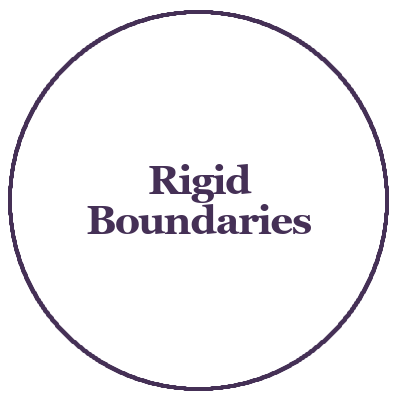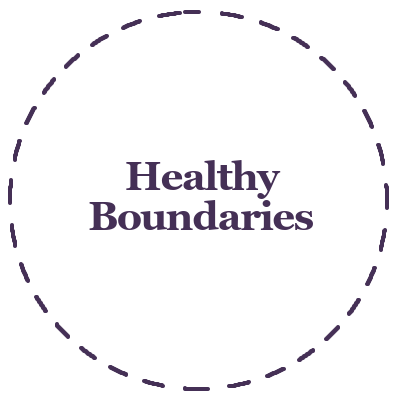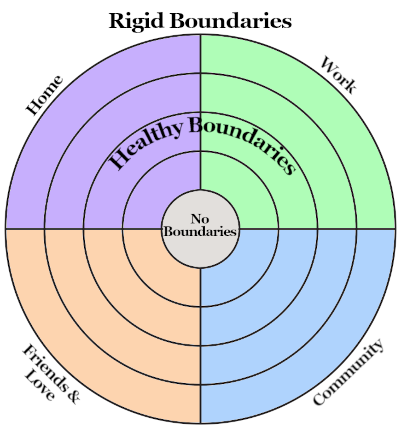Assessing your boundaries is the first step to establishing healthy limits. “Boundaries” is a hot topic, but many people have misunderstandings about what they are. Some people envision them as a brick wall with a “No Trespassing” sign, but boundaries are more complex than that. The best metaphor is a throwback to high school biology- the cell membrane. If that doesn’t ring a bell, the cell membrane is the protective barrier are the cell. Far from being a brick wall, the cell membrane is selective about what comes in or out. This allows the chemistry of the inside of the cell to be different from what’s outside it. That is the crux of boundaries, being able to keep separate what’s your, and what isn’t. Another helpful definition is, boundaries are limits that keep you from being violated, manipulated, or overwhelmed.
Why Assessing Boundaries Matters
Let’s be real, setting and maintaining healthy boundaries isn’t easy. We have to be aware of our feelings, and the other person’s. We have to know and communicate our wants and desires, and allow others to do the same. Then we have to set a limit and maintain it. Is it worth it? Yes! Healthy boundaries are associated with all kinds of positive things, from self-esteem to resilience, to physical wellbeing, and better relationships. By not spending our energy trying to solve problems that aren’t ours to solve, and feeling overwhelmed or resentful we have more to spend on other things. That leaves more time for our true responsibilities, self-care, healing, and fun. The first step is knowing where we are starting from.
Loose Boundaries
 If you have loose or porous boundaries you are likely feeling overwhelmed. You are more likely to be manipulated or abused, though you may be so used to this that you don’t recognize it. You may suffer from low self-esteem or focus so much on others that you don’t know who you really are. Some signs of having loose (or porous) boundaries are:
If you have loose or porous boundaries you are likely feeling overwhelmed. You are more likely to be manipulated or abused, though you may be so used to this that you don’t recognize it. You may suffer from low self-esteem or focus so much on others that you don’t know who you really are. Some signs of having loose (or porous) boundaries are:
- Oversharing personal information
- Difficulty saying no to others
- Overinvolved in others’ problems
- Dependent on others’ opinions
- Accept disrespectful or abusive behavior
- Fearful of rejection if you don’t comply with others
Rigid Boundaries
 Unlike loose boundaries, rigid boundaries are likely to leave you feeling isolated and detached, even from those you love. You may be fearful of letting others get close or be quick to cut off loved ones that they perceive as violating your boundaries. Some signs of rigid boundaries are:
Unlike loose boundaries, rigid boundaries are likely to leave you feeling isolated and detached, even from those you love. You may be fearful of letting others get close or be quick to cut off loved ones that they perceive as violating your boundaries. Some signs of rigid boundaries are:
- Avoid intimacy and close relationships
- Unlikely to ask for help
- Very protective of feelings and personal information
- Seem detached even to close loved ones
- Keep others at a distance
- Fearful of rejection
Healthy Boundaries
 As you might guess, healthy boundaries fall somewhere in the middle of loose and rigid boundaries. These allow for self-esteem and independence and also for intimacy and flexibility. This healthy balance improves our wellbeing and helps ensure healthy relationships. Some signs of healthy boundaries include:
As you might guess, healthy boundaries fall somewhere in the middle of loose and rigid boundaries. These allow for self-esteem and independence and also for intimacy and flexibility. This healthy balance improves our wellbeing and helps ensure healthy relationships. Some signs of healthy boundaries include:
- Have awareness of and values your opinion, needs, and desires
- Don’t compromise values for others
- Share personal information appropriately (with those as Brene Brown says in The Gifts of Imperfection, “have earned the right to hear it”)
- Can communicate wants and needs
- Take ultimate responsibility for your own happiness
- Respectful of the boundaries of others
Assessing Your Boundaries
Assess your boundaries in each life area
Often we have different levels of boundaries in different areas. For example, we may have rigid boundaries at work, healthy ones in our friendships, and loose at home. The Boundaries Assessment Exercise can help you in assessing your boundaries in each life area.
Have self-compassion
While you are looking at your current boundaries, have compassion for yourself. No one has perfect boundaries. They are always shifting as we grow and change, and as our relationships change. Wherever you are starting from, being honest with yourself is the most important thing. Once you know where you are, you can take steps to get to where you want to be.
Experiment with new behaviors
Once you are aware of your current boundaries, you can start to experiment with new behaviors. Perhaps, share something with a trusted friend, even though it makes you nervous. Or, say “no” to something you would normally agree to even though to don’t want to. Expect that people may be surprised, or even unhappy that you are changing. Be willing to listen and consider tweaking your boundaries, if you can do so without compromising what’s really important.
The video below highlights how this went when I set boundaries with my son around his chores. By using if-then statements I was able to make my expectations clear, as well as the consequences. Real-life boundaries often require tweaking. We don’t need to be completely inflexible, either.
